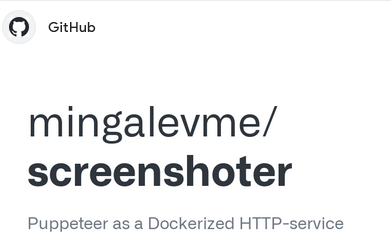If you need to take a screenshot of websites via the Linux server console, you can use the screenshoter (https://github.com/mingalevme/screenshoter). This is an HTTP service in a Docker container based on Google Puppeteer.
In the simplest case, you can start the screenshoter container like this:
# docker pull mingalevme/screenshoter
# docker run -d --restart always -p 8080:8080 --name screenshoter mingalevme/screenshoterNow, to take a screenshot of the website, it is enough to call the API via HTTP. Just run the curl command in the console:
# curl "http://localhost:8080/screenshot?url=https://poweradm.com" > ~/sitescreen.pngAs a result, a site screenshot will be saved to a ~/sitescreen.png file.
You can specify the screen resolution of the client for which you want to create a screenshot:
# curl "http://localhost:8080/screenshot?url=https://poweradm.com&viewport-width=1920&viewport-height=1080" > ~/1920-1080-poweradm_screen.pngThis screenshot solution can be used in any webhook-based monitoring system.

You can run the Screenshoter container with Nginx to proxy the connection. To do this, use the following docker-compose.yml:
version: "3.1"
services:
screenshoter-app:
image: mingalevme/screenshoter
restart: always
screenshoter-nginx:
image: nginx:alpine
ports:
- "80:80"
volumes:
- ./screenshoter.nginx.conf:/etc/nginx/conf.d/default.conf
- "/var/log/nginx:/var/log/nginx"
- "/var/cache/nginx:/var/cache/nginx"
- "/dev/null:/var/cache/screenshoter"
depends_on:
- screenshoter-app
So you can get screenshots of the site directly from a browser.
http://192.168.13.200:8080/screenshot?url=https://poweradm.com&full=true&format=jpeg
The screenshoter has quite a few options. You can specify user-agent, cookies, device-scale-factor, transparency, etc. The full list of screenshoter options is available on the project’s GitHub page.
